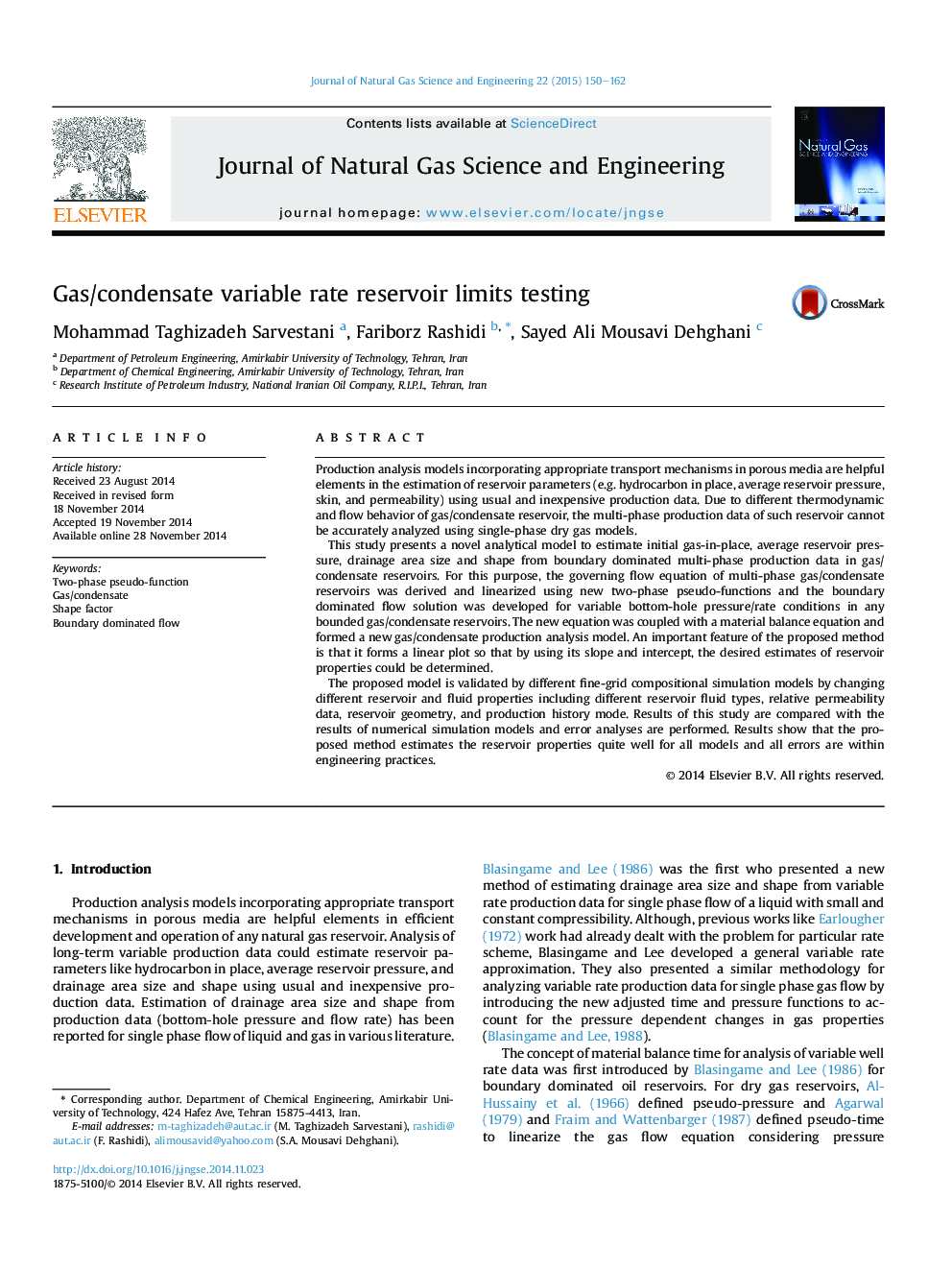| Article ID | Journal | Published Year | Pages | File Type |
|---|---|---|---|---|
| 1757799 | Journal of Natural Gas Science and Engineering | 2015 | 13 Pages |
•A new multi-phase model to analyze gas/condensate production data is presented.•The model estimates IGIP, average reservoir pressure, drainage area size and shape.•The developed model forms a linear plot that could be used simply.•The proposed model is validated by different fine-grid simulation models.•Results show that the proposed method estimates reservoir properties quite well.
Production analysis models incorporating appropriate transport mechanisms in porous media are helpful elements in the estimation of reservoir parameters (e.g. hydrocarbon in place, average reservoir pressure, skin, and permeability) using usual and inexpensive production data. Due to different thermodynamic and flow behavior of gas/condensate reservoir, the multi-phase production data of such reservoir cannot be accurately analyzed using single-phase dry gas models.This study presents a novel analytical model to estimate initial gas-in-place, average reservoir pressure, drainage area size and shape from boundary dominated multi-phase production data in gas/condensate reservoirs. For this purpose, the governing flow equation of multi-phase gas/condensate reservoirs was derived and linearized using new two-phase pseudo-functions and the boundary dominated flow solution was developed for variable bottom-hole pressure/rate conditions in any bounded gas/condensate reservoirs. The new equation was coupled with a material balance equation and formed a new gas/condensate production analysis model. An important feature of the proposed method is that it forms a linear plot so that by using its slope and intercept, the desired estimates of reservoir properties could be determined.The proposed model is validated by different fine-grid compositional simulation models by changing different reservoir and fluid properties including different reservoir fluid types, relative permeability data, reservoir geometry, and production history mode. Results of this study are compared with the results of numerical simulation models and error analyses are performed. Results show that the proposed method estimates the reservoir properties quite well for all models and all errors are within engineering practices.
